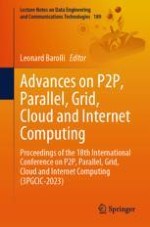P2P, Grid, Cloud, and Internet computing technologies have been very fast established as breakthrough paradigms for solving complex problems by enabling aggregation and sharing of an increasing variety of distributed computational resources at large scale.
Grid Computing originated as a paradigm for high performance computing, as an alternative to expensive supercomputers through different forms of large-scale distributed computing. P2P Computing emerged as a new paradigm after client-server and web-based computing and has shown useful to the development of social networking, Business to Business (B2B), Business to Consumer (B2C), Business to Government (B2G), Business to Employee (B2E), and so on. Cloud Computing has been defined as a “computing paradigm where the boundaries of computing are determined by economic rationale rather than technical limits”. Cloud computing has fast become the computing paradigm with applicability and adoption in all application domains and providing utility computing at large scale. Finally, Internet Computing is the basis of any large-scale distributed computing paradigms; it has very fast developed into a vast area of flourishing field with enormous impact on today’s information societies serving thus as a universal platform comprising a large variety of computing forms such as Grid, P2P, Cloud, and Mobile computing.
The aim of the book is to provide latest research findings, innovative research results, methods, and development techniques from both theoretical and practical perspectives related to P2P, Grid, Cloud, and Internet Computing as well as to reveal synergies among such large-scale computing paradigms.
